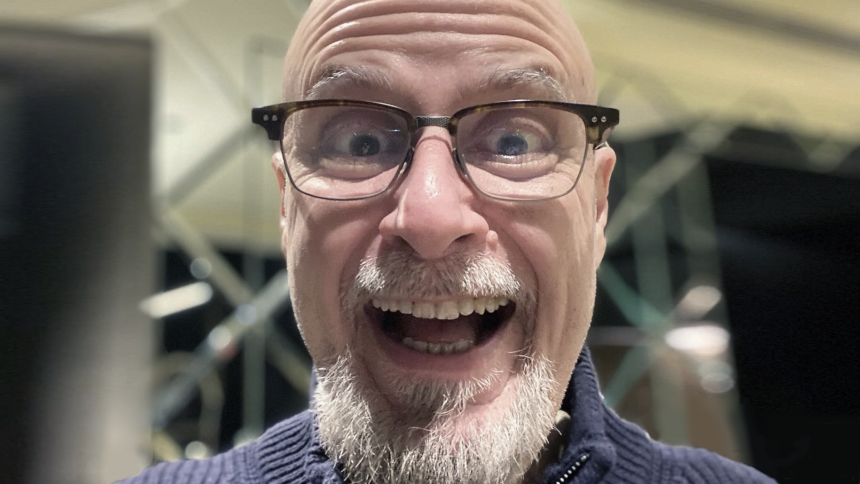Sound And Vision: Alex Proyas

In the article series Sound and Vision we take a look at music videos from notable directors. This week: several music videos by Alex Proyas.
I'm an Alex Proyas-apologist. His film record is widely considered spotty with Dark City and The Crow having a deservedly large cult following, I Robot and Spirits of the Air, Gremlins of the Cloud having some staunch defenders, and Knowing and Gods of Egypt only being defended by a handful of people (including me). Garage Days? Well, that one doesn't measure up to the rest, which I do all love wholeheartedly. There is a reason it was forgotten, but its inclusion in the Proyas-canon does make sense when you realize that he started out doing music videos. So him directing an ode to the rock-'n'-roll life style tracks.
It cannot be overstated how influential Proyas was as a music video director, though. He directed some bonafide classics of the genre, with cutting edge uses of technology. His oeuvre of music videos feels singular, and here is how you would recognize a Proyas-video: most of his videos use green screen in innovative ways, where there is a use of what I call "a digital multiplane technique". When filming with a camera, you have different planes of depth. Close-ups, mid-level-shots, long-shots. Proyas likes to separate those levels digitally, so you get a back-drop or close-up of something that was clearly filmed in a different space. Take for instance the music videos for Crowded House's Don't Dream It's Over, Yes' Rhythm of Love and Mike Oldfield's Magic Touch.
In Yes' Rhythm of Love (below) the multiplane-technique is used to separate live-action footage of a woman (sometimes filmed in stop-and-start 'pixilation-animation')' from stop-motion creatures who are smitten with her. Mike Oldfield's Magic Touch (also below) uses the multiple planes to make Magritte-like vistas, full of surreal imagery filled with silhouettes. The obsession with silhouettes also shows up in other videos by Proyas, most notably Fleetwood Mac's Everywhere and Steve Winwood's I Will Be Here. Meanwhile Crowded House's Don't Dream It's Over (also below) places footage of falling objects in close-up over the frames of the frontman walking through a house. It's an effect that Proyas also uses in Rick Springfield's Honeymoon in Beirut, and that really drives home the innovative use of the digital multiplane techniques.
Nobody did that like Proyas, and one of the reasons I think that Gods of Egypt flopped, is that he used digital techniques in a similar way there. People complaining about the shoddy CGI in that movie might not realize that realism was never the point, but that Proyas was trying to create a relatively flat-looking dreamscape that is sometimes reminiscent of hieroglyphs. He could have pushed it stylistically even further, for it to really make sense, like he did in his music videos. For one, I am reminded of the Wachowski Sisters' Speed Racer watching a lot of the innovative digital techniques in these videos. Gods of Egypt honestly deserves at least a part of that films deserved cult-following for also trying to steer away from realistic CGI in favor of something heightened and colorful.
Another way in which Proyas films and videos set themselves apart is thematically. Proyas is obsessed with the way in which locations affect our psyche and vice versa. This is most notable of course in Dark City, one of the quintessential 'psychogeographic' movies, but The Crow also finds innovative ways to showcase the psyche of Eric Draven through architecture. In the same way Knowing uses longitude and latitude as a plotpoint in a film that is all about trying to express sociological notions of loss, trauma and grief through cold things like statistics, numbers, science, physics, and yes, geography. In his music videos this notion of the mind and its possibilities as a physical space that actually has presence in this world is even more overtly present. We see this off course in Crowded House's Don't Dream It's Over, where the walking through a house becomes a walk through memory lane by smart usage of overlays of scribbled down notes. These notes are reminiscent of the sort of sentences one would scribble down in a diary or a family album. Better Be Home Soon (also below), also by Crowded House, is placed in a literal theater of the mind, in the same way that Joe Jackson's Nineteen Forever tries to give body to thoughts and thought processes by using cinematographic overlays of the protagonists mindscape.
In Proyas' work thoughts become physical form, through the use of digital technology. This is why Proyas is the sole director who I would trust with A.I and deep learning techniques. Something he is currently experimenting with, as he is very much interested in the overlap between technology and human thought, as in Dark City or I, Robot. And he seems wary enough of the downfalls of generative AI, so I would trust him to comment on the problems of the current technology in the work he is making. Lately Proyas has been turning his back on big studios, making shorts on his own dime with cutting-edge and experimental new technologies that harken back to his music video days. I am for one happy that he is letting his freak flag fly again, after having to deal with the limitations of Hollywood.






